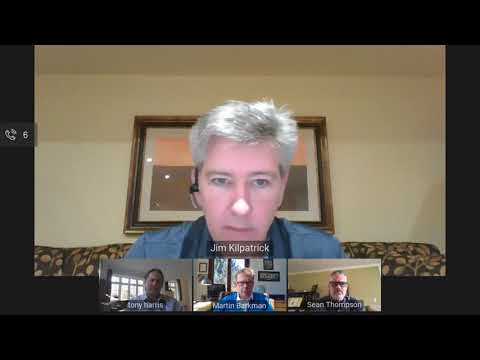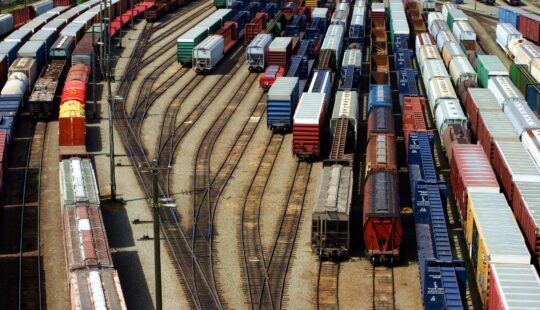The COVID-19 pandemic has unleashed unprecedented disruption for multi-national businesses – especially for their global supply chains. What’s more, the traditional means of managing the supply chain, whether through inventory or excess capacity, no longer work in the current environment.
To head off further disruption, participants in a 20-minute recorded webinar, presented by SAP in partnership with management consultancy Deloitte, argued that business leaders must build supply chain resiliency through diversification of sourcing and distribution in a connected way that ensures transparency across the entire supply chain network.
“There are two differences here,” said Jim Kilpatrick, Global Supply Chain and Network Operations leader for Deloitte, during the recent webinar about supply chain strategies for the COVID-19 crisis. “One is the demand side. If you’re selling into markets that are shut down, you’ve seen a massive shock to the demand side. And in some cases, if you source out of an impacted market, you’ve seen a shock to the supply side.”
The webinar, “Leading with Confidence During Disruption: Supply Chain Strategies,” provided the type of grab-and-go, pragmatic tips that managers could take with them to their next meeting, as well as more strategic advice about long-term solutions for reconfiguring supply chains for resiliency to weather a more protracted crisis. Along with Kilpatrick, it brought together a panel of experts that included host Tony Harris, global vice president of Supplier Solutions, SAP; Martin Barkman, senior vice president and global head of Solution Management and Digital Supply Chain, SAP; and Sean Thompson, executive vice president of Network and Ecosystem and Procurement Solutions, SAP.

Gain Visibility into the Extended Supply Chain Network to Mitigate Risk
If a business has been impacted on the demand side, then it is imperative to have a clear understanding about the drivers of these changes, according to the webinar panelists. Have customers moved to a different service channel? Are there additional risks impacting demand in a specific region? Kilpatrick recommended focusing attention on forecasting cash flows, noting that it is not just the flow of product that matters now, but also the flow of cash and information.
On the supply side, Kilpatrick said that for those who have access to inventory, now is the time to revisit the inventory policy to be sure they are getting the appropriate allocations and decide where they need to inject incremental supply stock in the event that the supply chain is disrupted.
“You need to get as much visibility as you can into your extended supply chain network,” Kilpatrick advised. “What we were seeing in the early days was that it wasn’t necessarily the tier-one suppliers that were causing the shocks to the system – it was the suppliers’ suppliers.”
Build Resilience by Creating a Digital Twin of the Supply Chain
Businesses are increasingly turning to digital solutions for the real-world problems brought on by COVID-19. Flexibility has become a key characteristic of resilient supply chains. Whether partnering with a new manufacturer or quickly identifying alternate logistical routes, businesses are relying on digital technologies now more than ever.
“Resilient supply chains can flex – can bend – without breaking,” Barkman said. “Companies that are best prepared are the ones that have created essentially a digital twin of their real-world supply chain that allows them to model, collaborate, and transact quickly, digitally, and frequently.”
Catalyze Real-Time Connectivity in the Digital Supply Network
Access to real-time information in a connected network is a critical differentiator for a new approach to supply chains, as businesses realize the traditional linear supply chain model is no longer sufficient. Among the advantages of being in a network is sharing information in a transparent way that can help identify the specific risks that a supplier may face during crisis.
“All of this points to this concept of being connected in a network,” Thompson said. “We’ve never seen more need for driving connectivity between demand side and supply side so that you have visibility. If you need to change out a supplier, you can do so in a networked way because you are real-time collaborating.”
It is going to be months before supply chains are resynchronized, Kilpatrick estimated. In the meantime, businesses will need to stay flexible. “Not only do we need to get goods flowing, we need to continue to manage the risks from suppliers that may not make it through the crisis – to the fact that the world is being disrupted at different times. That only comes from building a well-connected digital supply network.”
Resources to Get Started
To help businesses manage supply chain risk during the pandemic, SAP is offering companies access to some of its technology. These offers include:
- SAP Integrated Business Planning for sales and operations: This preconfigured application enables businesses to quickly and efficiently ramp up supply chains as they recover from the current crisis.
- SAP Ariba Discovery: This solution is available to help companies find alternative sources of supply in real time from among the 4 million suppliers in the Ariba Network.
- Experience in action: Deloitte’s collection of COVID-19 insights and resources to rapidly respond to new supply chain demands with SAP solutions.
- The Kinetic Enterprise Podcast: Navigating the Business Implications of COVID-19 Together: Times of uncertainty mean it is time to unite and evolve. Hear from a panel of Deloitte leaders as they discuss the most pressing questions caused by the COVID-19 crisis and share insights on what it means to be a Kinetic Enterprise today.



